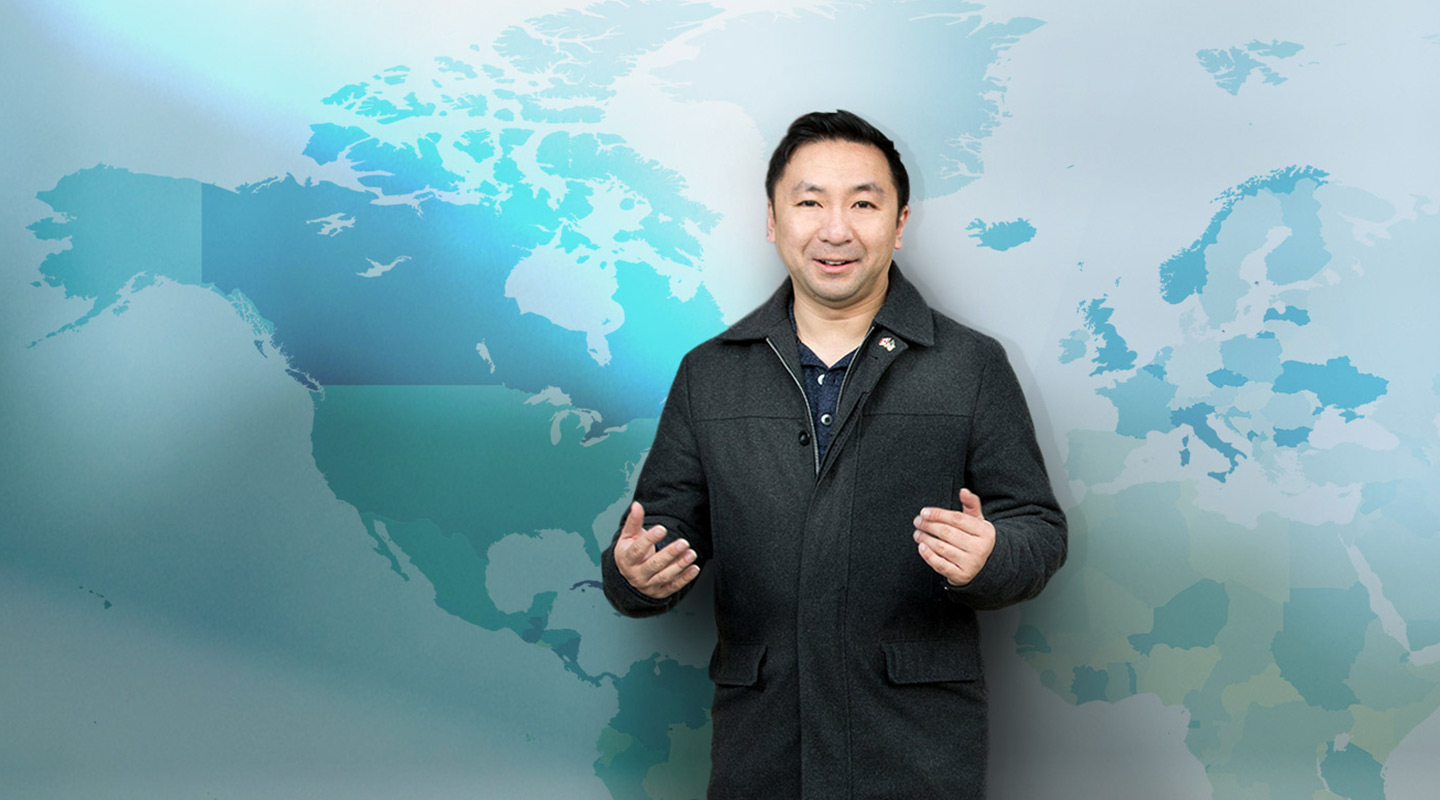Dear readers, With the launch of e-newsletter CUHK in Focus, CUHKUPDates has retired and this site will no longer be updated. To stay abreast of the University’s latest news, please go to https://focus.cuhk.edu.hk. Thank you.
Coaching Cantonese in Canada
Raymond Pai bridges cultures and generations

Being the only Cantonese lecturer at the University of British Columbia (UBC) in Canada, Pai Kit Raymond has an important role to play in promoting Cantonese culture overseas. Born and raised in Hong Kong, Raymond has regarded biology and language learning as his two passions since childhood. Back in the days when he was a Shaw College student in Biology, he participated in an exchange programme to the US where he had a chance to make friends with people from different linguistic and cultural backgrounds. This eye-opening experience reinforced his interest in language learning. After graduating from CUHK, he ventured abroad again and pursued his master’s degree in Linguistics in the US.
Upon completion of his postgraduate studies, Raymond decided to stay in the US and accepted a job offer at the Defense Language Institute in California, where he taught Mandarin Chinese for eight years.
‘The students there were required to undergo military training and some of them had even gone to war. They took their learning seriously. The course itself, consisting of at least six hours of classes each day, was demanding. Within just a year, from being completely ignorant of the Chinese language, students gradually mastered some basic listening, reading and writing skills. They were even able to strike up a conversation in Mandarin Chinese,’ said Raymond.
Despite the satisfaction obtained from teaching there, Raymond gradually felt an unspeakable sense of loneliness. All other teaching staff were native speakers of Mandarin Chinese, for one thing. Moreover, though from time to time he might want to introduce some interesting Cantonese expressions to his students, he often gave up on the idea simply because it was not part of the curriculum.

It was at this juncture that he received news of an immediate opening for a lecturer for UBC’s newly created Cantonese programme. He thought, ‘Why not give it a shot?’ With his years of professional experience in language teaching and assessment, he finally managed to nail down the teaching job.
Though Raymond may still be the only Cantonese lecturer at UBC, instead of feeling ‘lonely’, he now describes himself as being ‘thrilled’. In 2016, when a group of Shaw College exchange students arrived at UBC, Raymond lost no time in arranging for them to meet with the students of his Cantonese programme.
‘I felt a special tie to the Shaw College students. Once they knew I had also been an exchange student from Shaw College─just like them, they couldn’t hide their amazement,’ Raymond remarked.
The Shaw College students also shared with Raymond’s students a host of trendy expressions in Cantonese, which never failed to bring down the floor.
‘One of my students told me that the exchange session with the CUHK students proved the most rewarding lesson for the entire semester,’ said Raymond.

Now that many opt to study Putonghua, are there fewer students interested in learning Cantonese? Raymond for one did not think so: ‘In fact, there are still many around the world who want to learn Cantonese. The crux of the matter is whether resources are deployed to provide a professional learning environment.’
His Cantonese programme has now entered its second year. Originally intended for non-Chinese-speaking students, the programme has become so popular that it is now open to native speakers of Mandarin Chinese as well. In response to growing demand, an extra class will be offered next semester.
When it comes to students’ learning objectives, it’s different strokes for different folks. There are those who are kung fu aficionados desperate to learn from Cantonese-speaking masters. There are those who admire Cantonese food culture while others may want to make friends, do business or find work by blending into the Cantonese-speaking circles in Canada and Asia.
As for those who were born in Canada and came from Cantonese-speaking families, their objective is clear: to be able to communicate with the elders in their families who do not speak English.
‘Initially, these students really struggled to speak Cantonese, often mixing it in with English. Now they are becoming increasingly fluent and can even chat with their grandparents in Cantonese. It warms my heart to see that happen,’ the happy teacher elaborated.

After all, the ultimate aim of language education is to build bridges of communication for people to bond with each other.
Take Raymond Pai’s Cantonese programme for example, it has made it possible for his students in Canada to bond with students from his alma mater and for immigrant families to keep strong ties across generations. What is more, it has also enabled Raymond himself to find his linguistic roots, which inspires him to devote himself wholeheartedly to language teaching and to promote Cantonese culture around the world.
Reported by Annie L. of ISO and translated by Shadow Wong
This article was originally published on CUHK Homepage in Dec 2016.